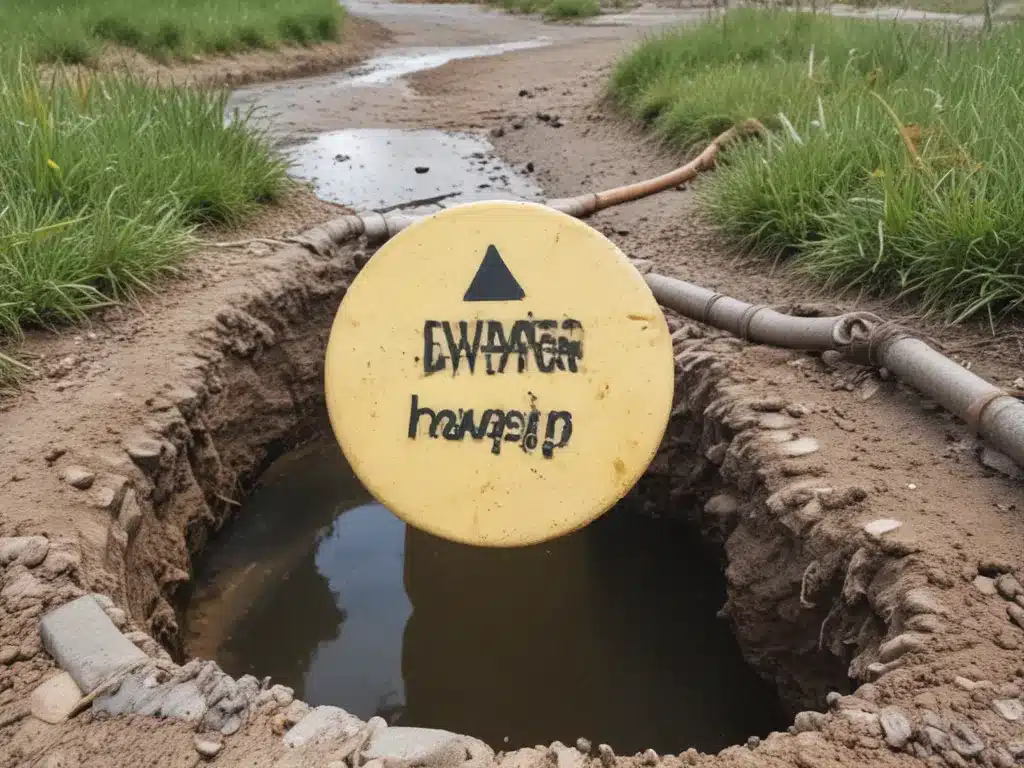Introduction
Sewage contamination is a serious environmental and health hazard that can have devastating consequences if not addressed promptly. In this comprehensive guide, I will delve into the intricacies of avoiding sewage contamination, providing you with valuable insights, practical tips, and real-life examples. Fasten your seatbelts as we embark on a journey to safeguard our homes, businesses, and communities from the perils of sewage spills.
Understanding the Risks of Sewage Contamination
Sewage contamination – the introduction of sewage into the environment – poses significant risks to human health and the ecosystem. Here are some key risks associated with sewage contamination:
-
Water Contamination: Sewage can pollute water sources, such as lakes, rivers, and groundwater, rendering them unsafe for drinking, bathing, or recreational activities.
-
Disease Transmission: Sewage contains harmful pathogens, including bacteria, viruses, and parasites, which can cause various illnesses, such as cholera, typhoid fever, hepatitis A, and gastroenteritis.
-
Environmental Degradation: Sewage can harm aquatic life, disrupt ecosystems, and contribute to the depletion of oxygen in water bodies, leading to fish kills and biodiversity loss.
-
Foul Odors: The presence of sewage can produce unpleasant and overpowering odors, compromising air quality and creating an unpleasant living or working environment.
Preventing Sewage Contamination: Proactive Measures
Preventing sewage contamination should be a top priority for homeowners, businesses, and communities. By taking proactive measures, we can mitigate the risks and avoid the costly and hazardous consequences of sewage spills. Here are some effective strategies:
1. Proper Maintenance of Sewer Systems
Regular inspection and maintenance of sewer lines, septic systems, and wastewater treatment facilities are crucial to preventing sewage contamination. Identifying and addressing any issues, such as blockages, leaks, or system failures, can prevent sewage overflows and subsequent contamination.
2. Responsible Disposal of Household and Industrial Waste
Improper disposal of household and industrial waste can contribute to sewage contamination. It is essential to follow proper waste disposal guidelines, avoid pouring hazardous substances down drains, and ensure industrial waste is treated and disposed of responsibly.
3. Stormwater Management
During heavy rainfall or flooding, stormwater can overwhelm sewer systems, causing sewage overflows. Implementing effective stormwater management practices, such as installing permeable surfaces, constructing retention ponds, and upgrading sewer infrastructure, can help alleviate the strain on sewer systems and prevent sewage contamination.
4. Public Awareness and Education
Raising public awareness about the risks of sewage contamination and the importance of preventive measures is crucial. Educational campaigns, workshops, and community outreach programs can empower individuals to adopt responsible practices and report potential sewage spills or system failures promptly.
Responding to Sewage Contamination: Immediate Actions
Despite our best efforts, sewage contamination incidents can still occur. When faced with such situations, swift and appropriate action is imperative to minimize the impact and prevent further contamination. Here are some steps to take:
-
Isolate the Area: Cordon off the affected area to prevent further spread of contamination and restrict access to unauthorized personnel.
-
Notify Authorities: Report the sewage spill or contamination incident to the relevant authorities, such as the local environmental protection agency, health department, or utility company, for prompt remediation and public safety measures.
-
Seek Professional Assistance: Engage the services of a reputable biohazard cleaning company that specializes in sewage remediation. These professionals have the necessary equipment, training, and expertise to safely and effectively clean and disinfect contaminated areas.
-
Implement Safety Measures: Follow proper safety protocols, such as wearing personal protective equipment (PPE), avoiding direct contact with contaminated areas, and adhering to hygiene practices to prevent the spread of pathogens.
-
Conduct Thorough Cleaning and Disinfection: Once the sewage spill or contamination has been addressed, a comprehensive cleaning and disinfection process should be carried out to ensure the affected area is safe for occupancy or use.
Real-Life Examples and Case Studies
To illustrate the importance of avoiding sewage contamination and the potential consequences of inadequate preventive measures, let’s examine two real-life examples:
Example 1: Sewage Spill in a Residential Neighborhood
In a suburban community, a major sewage spill occurred due to a blocked sewer line. The sewage overflowed into the streets and nearby yards, exposing residents to potential health risks. The local authorities were notified, and a biohazard cleaning company was called in to address the contamination.
The cleaning crew donned appropriate PPE and cordoned off the affected areas. They then proceeded to remove the sewage, disinfect the contaminated surfaces, and conduct air quality testing to ensure the area was safe for residents to return.
This incident highlighted the importance of regular sewer maintenance and prompt reporting of potential issues to minimize the impact of sewage spills.
Example 2: Sewage Contamination at a Food Processing Facility
A food processing facility experienced a sewage backup, causing contamination in several production areas. The facility’s management immediately halted operations, evacuated the premises, and contacted the relevant authorities and a biohazard cleaning company.
The cleaning crew meticulously decontaminated the affected areas, ensuring thorough disinfection of surfaces, equipment, and air handling systems. Extensive testing was conducted to ensure the facility met stringent health and safety standards before resuming operations.
This case study underscores the significance of having robust sewage contamination response protocols in place, especially in facilities that handle food or other sensitive products.
Conclusion
Avoiding sewage contamination is a collective responsibility that requires diligence, proactive measures, and a comprehensive understanding of the risks involved. By implementing proper maintenance practices, responsible waste disposal, effective stormwater management, and public education, we can significantly reduce the likelihood of sewage spills and their devastating consequences.
However, when faced with sewage contamination incidents, swift and appropriate action is crucial. Engaging the services of professional biohazard cleaning companies ensures a safe and thorough remediation process, minimizing the impact on human health and the environment.
Remember, prevention is always better than cure, but when contamination occurs, timely and expert intervention can mitigate the risks and restore normalcy to our homes, businesses, and communities.







